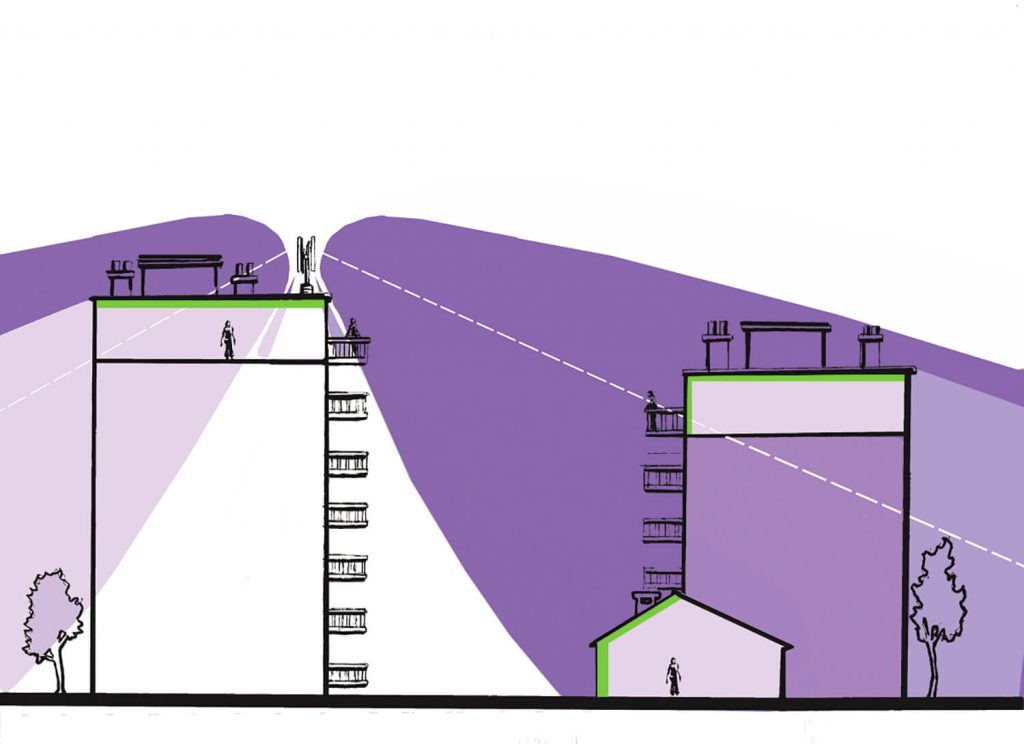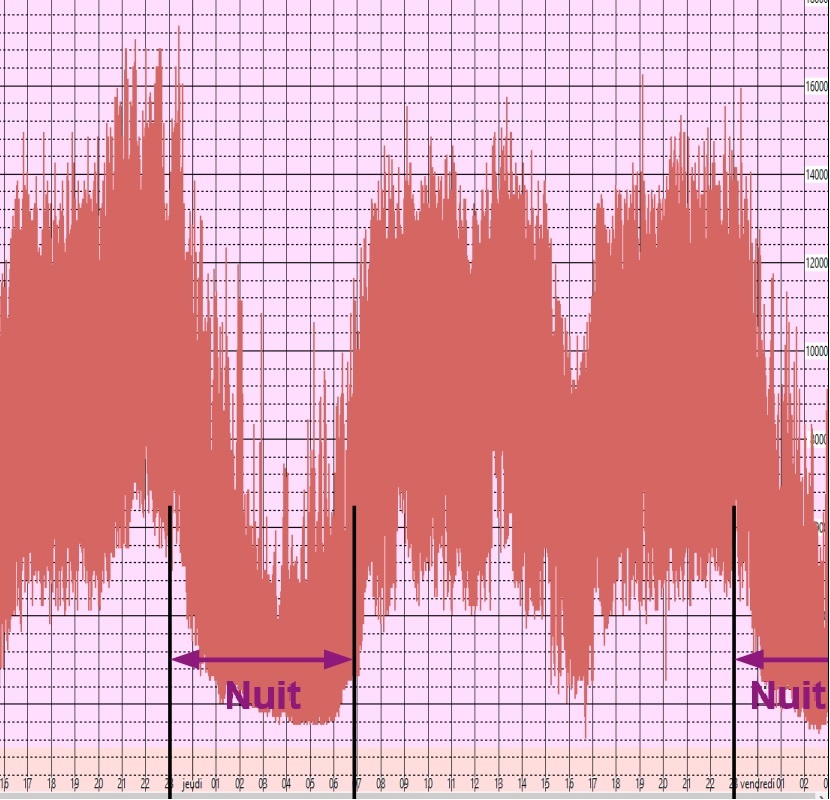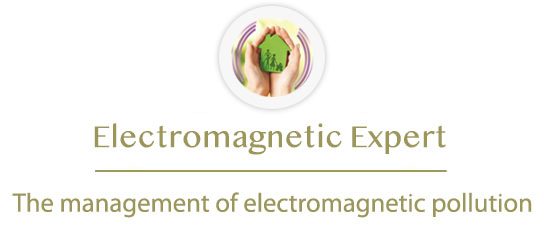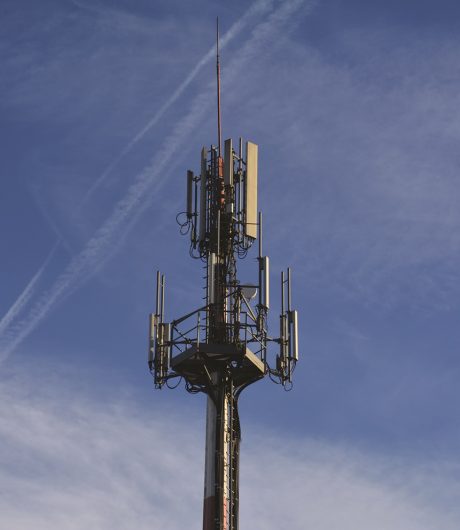What does the emission power of mobile phone antennas depend on?
It varies a lot according to the time of day or night (a factor that can reach over 20). Here is a recording that I made over a 48-hour period showing the variation in the intensity of electromagnetic radiation emitted from 2G, 3G and 4G antennas:
The variations in the emission power of a relay antenna depend on several parameters:
-
The setting of the maximum emission power:
The maximum emission power is adjusted at the beginning by the supplier according to the range of cover required and local constraints.
-
The number of simultaneous communications on this same mast:
The higher the number of communications that the antenna has to simultaneously manage, the stronger the emissions.
-
The type of communication (telephone calls or internet access):
An internet access requires higher debit and emission power than a simple telephone call not only at the level of the smartphone but also for the antenna.
-
The individual user’s reception level:
The worse a user’s reception level (a zone with bad coverage), the higher the emission from the smartphone in order to communicate with the mast. In the same way, the mast is equally obliged to increase emission intensity in order to communicate with the smartphone. A mobile phone mast can independently adjust the emission power needed for each user.

Emission power variations of the 2G/3G/4G antenna mast for 24H

Recording carried out on the hills above Aix-en-Provence:
Measurements were carried out with the HF59B Gigahertz plus frequency filter FF10 (adjusted to only pick up the downward direction of mobile phone emissions).
-
The downward direction corresponds to mobile phone masts.
-
The upward direction corresponds to mobile phone emissions.
During the night a significant reduction from relay antenna emissions was noted.

